Sina Mohammadi
Pre-Columbian Settlements Shaped Palm Clusters in the Sierra Nevada de Santa Marta, Colombia
Jul 09, 2025Abstract:Ancient populations markedly transformed Neotropical forests, yet understanding the long-term effects of ancient human management, particularly at high-resolution scales, remains challenging. In this work we propose a new approach to investigate archaeological areas of influence based on vegetation signatures. It consists of a deep learning model trained on satellite imagery to identify palm trees, followed by a clustering algorithm to identify palm clusters, which are then used to estimate ancient management areas. To assess the palm distribution in relation to past human activity, we applied the proposed approach to unique high-resolution satellite imagery data covering 765 km2 of the Sierra Nevada de Santa Marta, Colombia. With this work, we also release a manually annotated palm tree dataset along with estimated locations of archaeological sites from ground-surveys and legacy records. Results demonstrate how palms were significantly more abundant near archaeological sites showing large infrastructure investment. The extent of the largest palm cluster indicates that ancient human-managed areas linked to major infrastructure sites may be up to two orders of magnitude bigger than indicated by archaeological evidence alone. Our findings suggest that pre-Columbian populations influenced local vegetation fostering conditions conducive to palm proliferation, leaving a lasting ecological footprint. This may have lowered the logistical costs of establishing infrastructure-heavy settlements in otherwise less accessible locations. Overall, this study demonstrates the potential of integrating artificial intelligence approaches with new ecological and archaeological data to identify archaeological areas of interest through vegetation patterns, revealing fine-scale human-environment interactions.
FHIST: A Benchmark for Few-shot Classification of Histological Images
May 31, 2022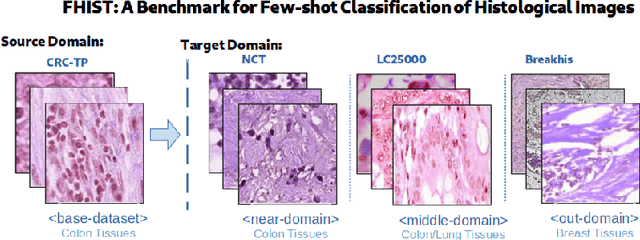
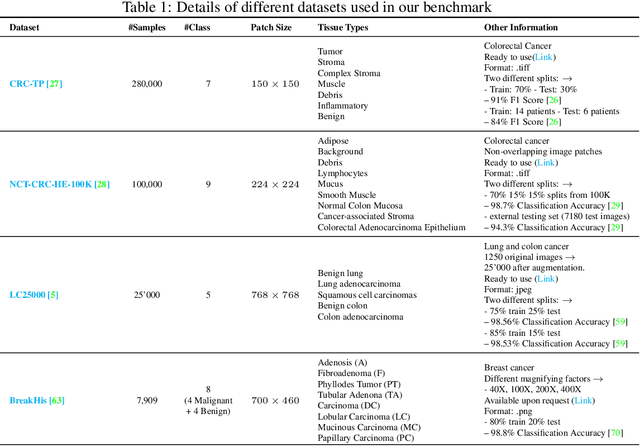

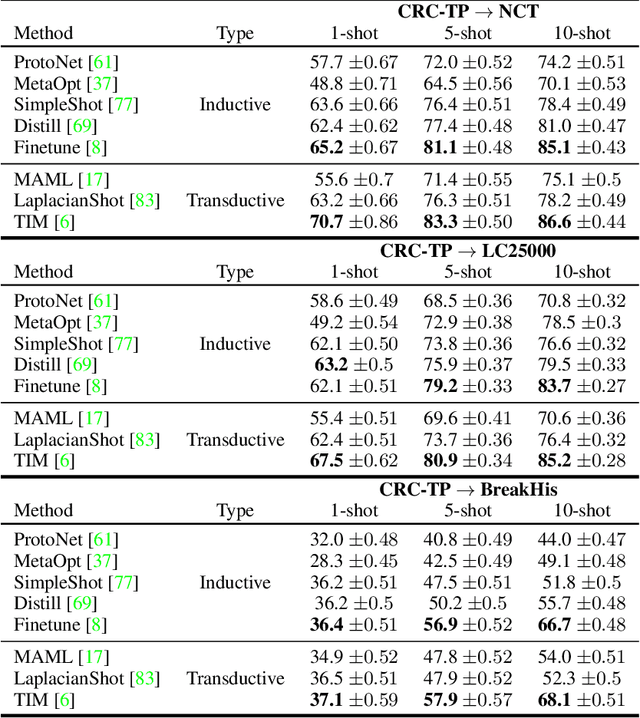
Abstract:Few-shot learning has recently attracted wide interest in image classification, but almost all the current public benchmarks are focused on natural images. The few-shot paradigm is highly relevant in medical-imaging applications due to the scarcity of labeled data, as annotations are expensive and require specialized expertise. However, in medical imaging, few-shot learning research is sparse, limited to private data sets and is at its early stage. In particular, the few-shot setting is of high interest in histology due to the diversity and fine granularity of cancer related tissue classification tasks, and the variety of data-preparation techniques. This paper introduces a highly diversified public benchmark, gathered from various public datasets, for few-shot histology data classification. We build few-shot tasks and base-training data with various tissue types, different levels of domain shifts stemming from various cancer sites, and different class-granularity levels, thereby reflecting realistic scenarios. We evaluate the performances of state-of-the-art few-shot learning methods on our benchmark, and observe that simple fine-tuning and regularization methods achieve better results than the popular meta-learning and episodic-training paradigm. Furthermore, we introduce three scenarios based on the domain shifts between the source and target histology data: near-domain, middle-domain and out-domain. Our experiments display the potential of few-shot learning in histology classification, with state-of-art few shot learning methods approaching the supervised-learning baselines in the near-domain setting. In our out-domain setting, for 5-way 5-shot, the best performing method reaches 60% accuracy. We believe that our work could help in building realistic evaluations and fair comparisons of few-shot learning methods and will further encourage research in the few-shot paradigm.
3D Fully Convolutional Neural Networks with Intersection Over Union Loss for Crop Mapping from Multi-Temporal Satellite Images
Feb 15, 2021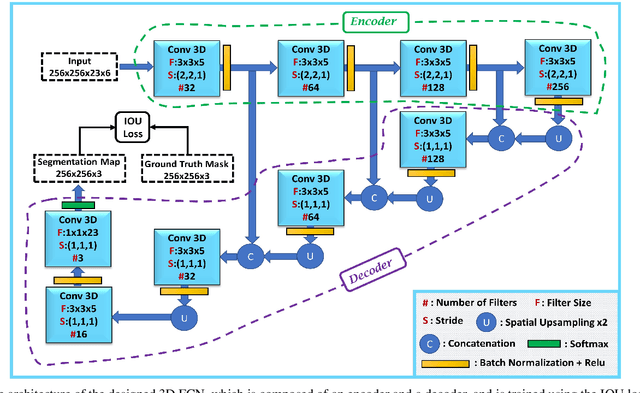
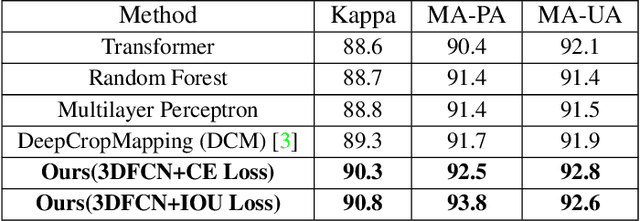
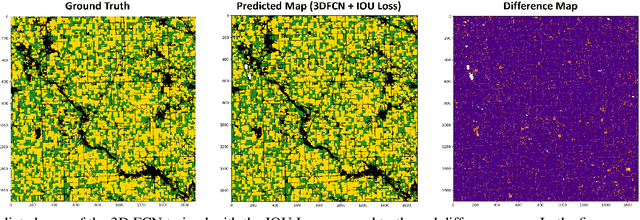
Abstract:Information on cultivated crops is relevant for a large number of food security studies. Different scientific efforts are dedicated to generate this information from remote sensing images by means of machine learning methods. Unfortunately, these methods do not account for the spatial-temporal relationships inherent in remote sensing images. In our paper, we explore the capability of a 3D Fully Convolutional Neural Network (FCN) to map crop types from multi-temporal images. In addition, we propose the Intersection Over Union (IOU) loss function for increasing the overlap between the predicted classes and ground truth data. The proposed method was applied to identify soybean and corn from a study area situated in the US corn belt using multi-temporal Landsat images. The study shows that our method outperforms related methods, obtaining a Kappa coefficient of 90.8%. We conclude that using the IOU Loss function provides a superior choice to learn individual crop types.
DFNet: Discriminative feature extraction and integration network for salient object detection
Apr 03, 2020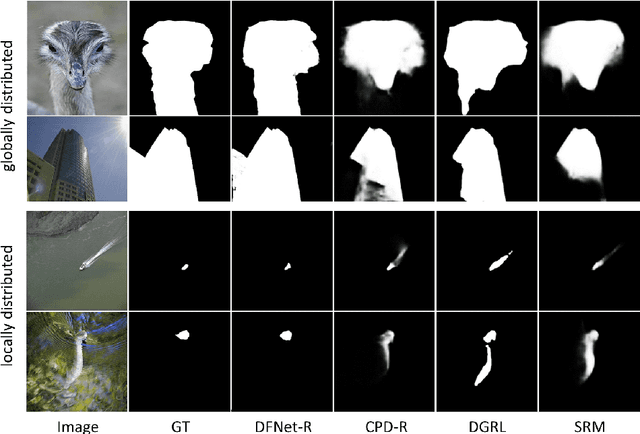
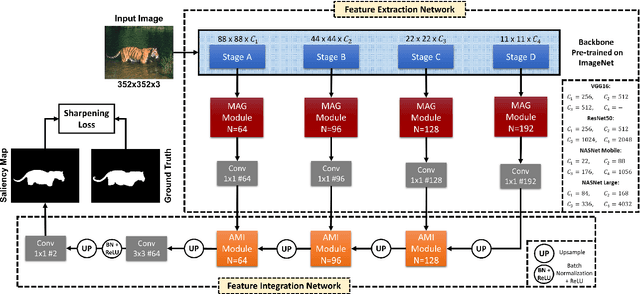

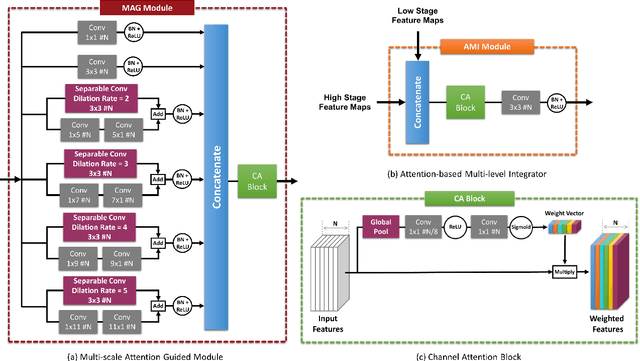
Abstract:Despite the powerful feature extraction capability of Convolutional Neural Networks, there are still some challenges in saliency detection. In this paper, we focus on two aspects of challenges: i) Since salient objects appear in various sizes, using single-scale convolution would not capture the right size. Moreover, using multi-scale convolutions without considering their importance may confuse the model. ii) Employing multi-level features helps the model use both local and global context. However, treating all features equally results in information redundancy. Therefore, there needs to be a mechanism to intelligently select which features in different levels are useful. To address the first challenge, we propose a Multi-scale Attention Guided Module. This module not only extracts multi-scale features effectively but also gives more attention to more discriminative feature maps corresponding to the scale of the salient object. To address the second challenge, we propose an Attention-based Multi-level Integrator Module to give the model the ability to assign different weights to multi-level feature maps. Furthermore, our Sharpening Loss function guides our network to output saliency maps with higher certainty and less blurry salient objects, and it has far better performance than the Cross-entropy loss. For the first time, we adopt four different backbones to show the generalization of our method. Experiments on five challenging datasets prove that our method achieves the state-of-the-art performance. Our approach is fast as well and can run at a real-time speed.
Ensembles of Deep Neural Networks for Action Recognition in Still Images
Mar 22, 2020
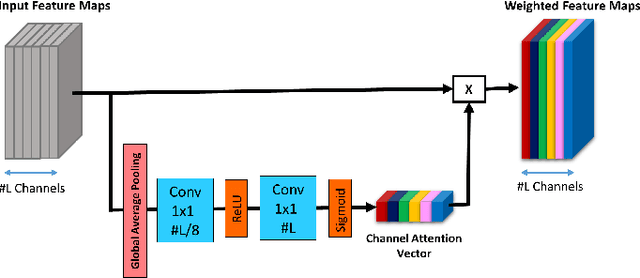
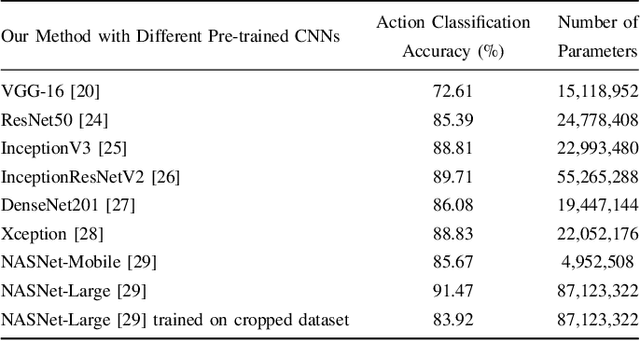

Abstract:Despite the fact that notable improvements have been made recently in the field of feature extraction and classification, human action recognition is still challenging, especially in images, in which, unlike videos, there is no motion. Thus, the methods proposed for recognizing human actions in videos cannot be applied to still images. A big challenge in action recognition in still images is the lack of large enough datasets, which is problematic for training deep Convolutional Neural Networks (CNNs) due to the overfitting issue. In this paper, by taking advantage of pre-trained CNNs, we employ the transfer learning technique to tackle the lack of massive labeled action recognition datasets. Furthermore, since the last layer of the CNN has class-specific information, we apply an attention mechanism on the output feature maps of the CNN to extract more discriminative and powerful features for classification of human actions. Moreover, we use eight different pre-trained CNNs in our framework and investigate their performance on Stanford 40 dataset. Finally, we propose using the Ensemble Learning technique to enhance the overall accuracy of action classification by combining the predictions of multiple models. The best setting of our method is able to achieve 93.17$\%$ accuracy on the Stanford 40 dataset.
* 5 pages, 2 figures, 3 tables, Accepted by ICCKE 2019
CAGNet: Content-Aware Guidance for Salient Object Detection
Nov 29, 2019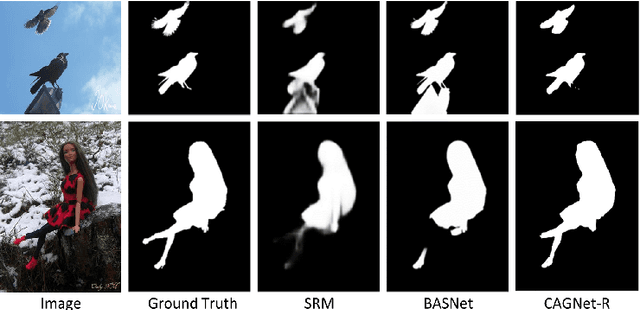
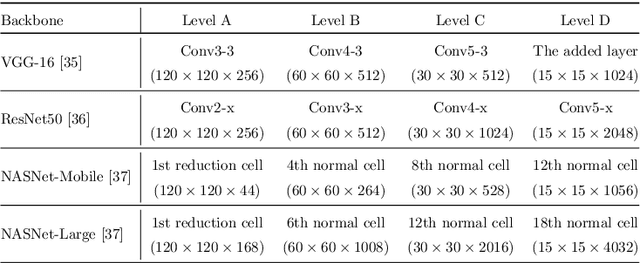
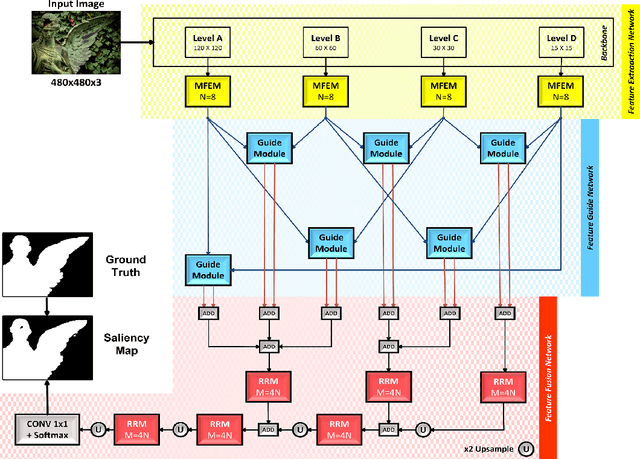
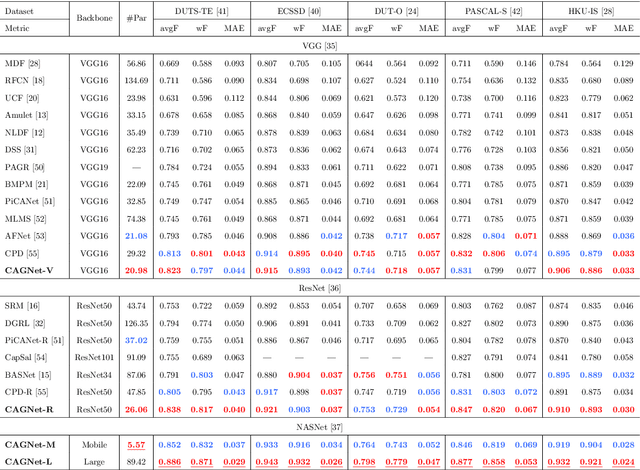
Abstract:Beneficial from Fully Convolutional Neural Networks (FCNs), saliency detection methods have achieved promising results. However, it is still challenging to learn effective features for detecting salient objects in complicated scenarios, in which i) non-salient regions may have "salient-like" appearance; ii) the salient objects may have different-looking regions. To handle these complex scenarios, we propose a Feature Guide Network which exploits the nature of low-level and high-level features to i) make foreground and background regions more distinct and suppress the non-salient regions which have "salient-like" appearance; ii) assign foreground label to different-looking salient regions. Furthermore, we utilize a Multi-scale Feature Extraction Module (MFEM) for each level of abstraction to obtain multi-scale contextual information. Finally, we design a loss function which outperforms the widely-used Cross-entropy loss. By adopting four different pre-trained models as the backbone, we prove that our method is very general with respect to the choice of the backbone model. Experiments on five challenging datasets demonstrate that our method achieves the state-of-the-art performance in terms of different evaluation metrics. Additionally, our approach contains fewer parameters than the existing ones, does not need any post-processing, and runs fast at a real-time speed of 28 FPS when processing a 480 x 480 image.
 Add to Chrome
Add to Chrome Add to Firefox
Add to Firefox Add to Edge
Add to Edge